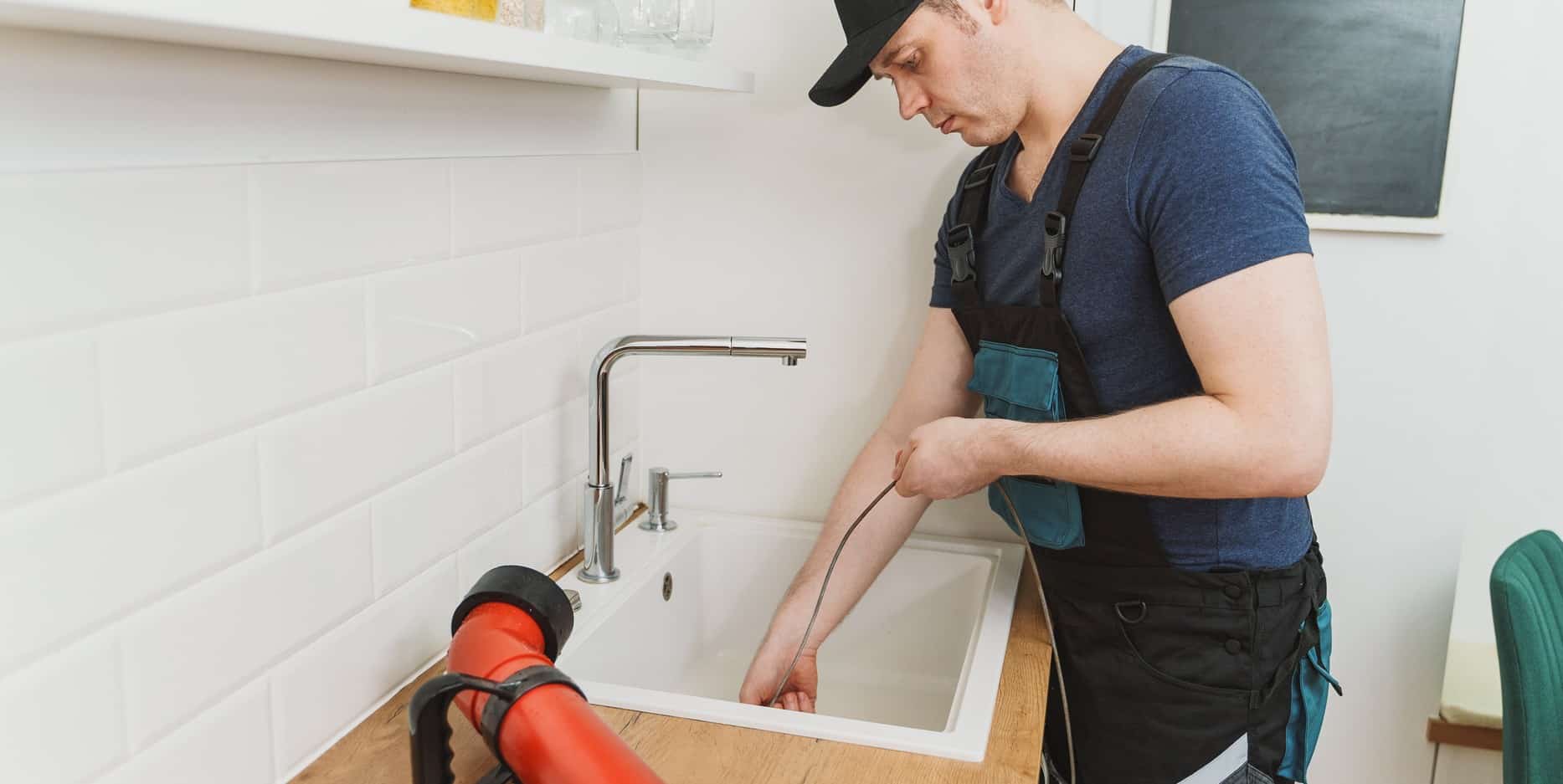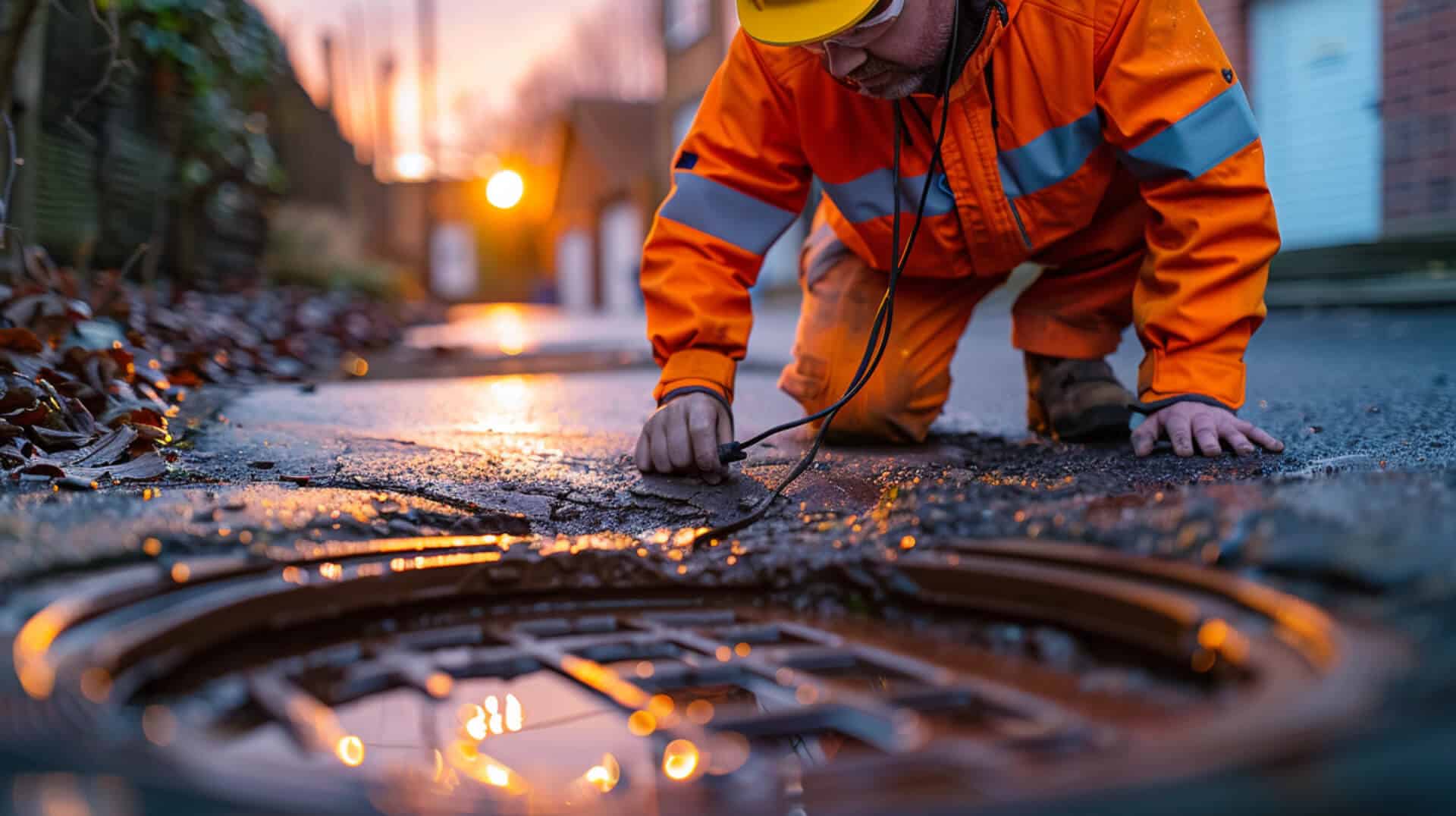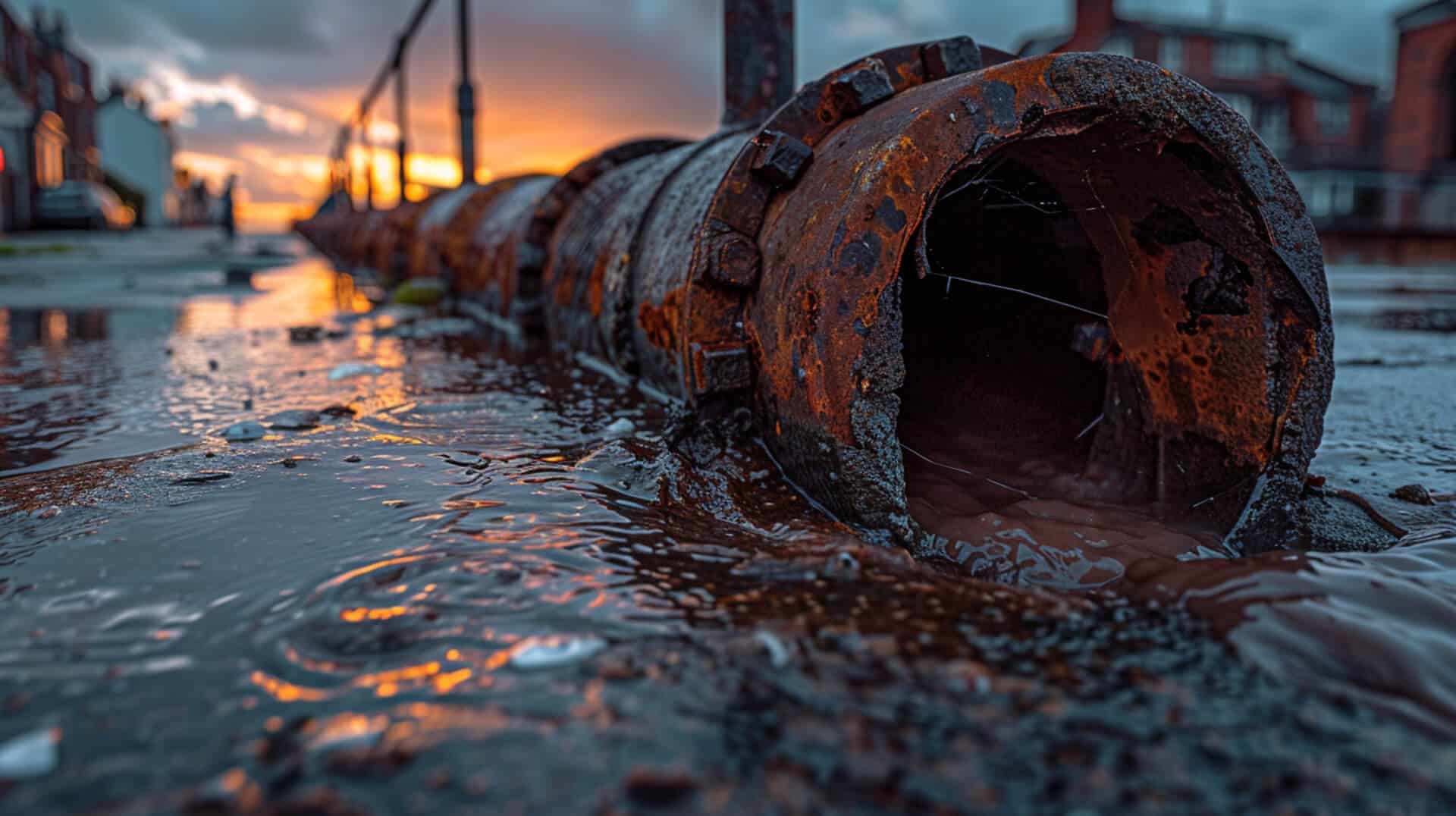 How Does Plant Debris End Up Blocking Your Drains?
How Does Plant Debris End Up Blocking Your Drains?
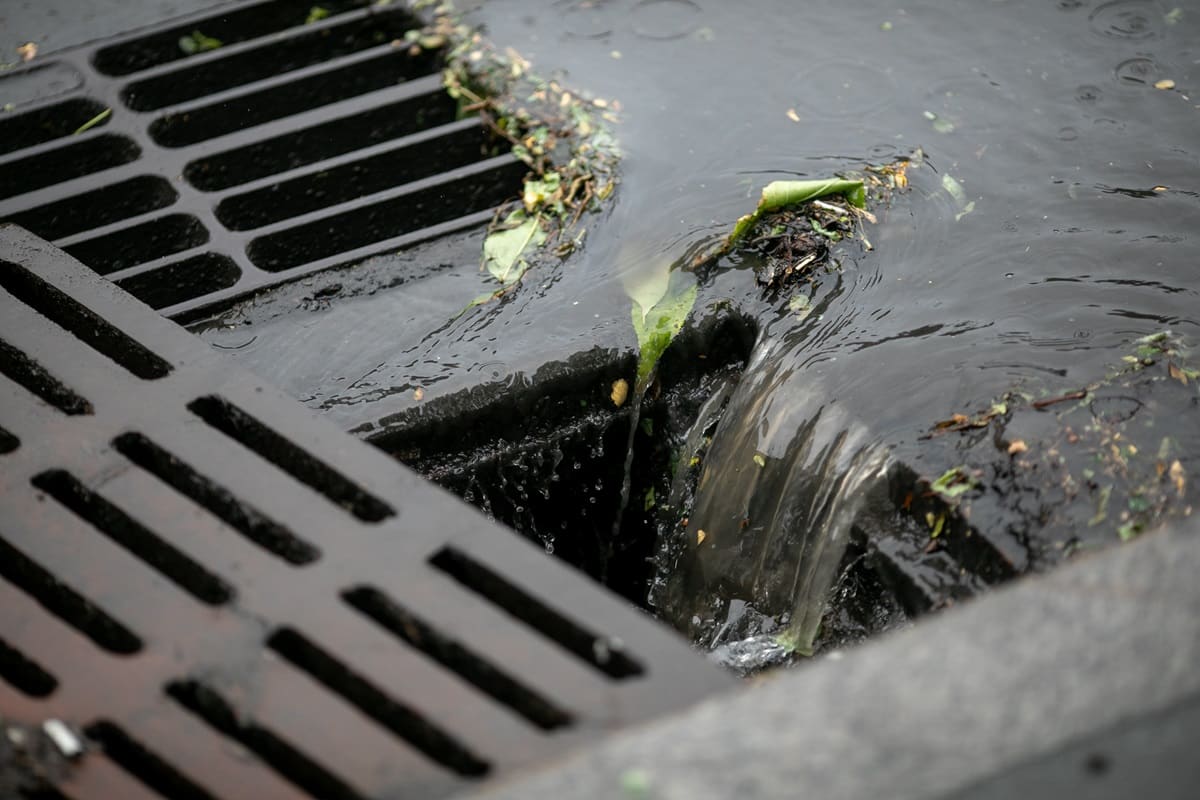
Plant Debris and Drain Blockages
Plant debris, including leaves, twigs, and other organic materials, can accumulate in drainage systems, leading to blockages. These blockages can cause significant issues, such as slow drainage, unpleasant odours, and even flooding. Addressing plant debris in drainage systems is crucial to maintaining the functionality and longevity of these systems.
Importance of Addressing Plant Debris in Drainage Systems
Ignoring plant debris in drainage systems can result in severe blockages that may require costly repairs. Regular maintenance and preventive measures can help avoid these issues, ensuring that water flows freely through the drains.
Who is Most Affected by Plant Debris Blockages?
Property owners, business owners, and facility managers are particularly affected by plant debris blockages. These individuals are responsible for maintaining the drainage systems on their properties and ensuring that they remain functional.
Guide Coverage
This guide will cover the following aspects related to plant debris and drain blockages:
- Types of plant debris that cause blockages
- Mechanisms of blockage formation
- Signs of blocked drains due to plant debris
- Preventive measures for plant debris blockages
- Tools and equipment for clearing plant debris
- Seasonal considerations for drain maintenance
- Long-term effects of plant debris blockages
- Professional services for drain maintenance
- Cost implications of plant debris blockages
- Innovative solutions and technologies
Types of Plant Debris That Cause Blockages
Plant debris can significantly impact drainage systems, leading to blockages that require attention. Understanding the types of plant debris that commonly cause these issues is essential for effective prevention and maintenance.
Common Types of Plant Debris
- Leaves
- Leaves are a primary cause of drain blockages, especially during autumn when they fall in large quantities.
- They can accumulate in gutters, downspouts, and outdoor drains, creating dense clogs.
- Twigs and Branches
- Twigs and small branches can break off trees and shrubs, particularly during storms or high winds.
- These materials can obstruct drains and combine with other debris to form larger blockages.
- Grass Clippings
- Grass clippings from lawn maintenance can enter drains if not properly managed.
- They can create a thick, mat-like layer that impedes water flow.
- Flower Petals
- Flower petals, though smaller, can accumulate in significant quantities, especially in gardens and landscaped areas.
- They can mix with other debris, contributing to blockages.
- Seeds and Pods
- Seeds and pods from trees and plants can fall into drains, particularly during certain seasons.
- These items can lodge in drain openings and combine with other materials to form clogs.
Contribution to Blockages
Leaves, Twigs, and Branches
- Accumulation: These materials can gather in large quantities, especially in areas with dense vegetation.
- Combination: They often mix with other debris, such as dirt and litter, creating more substantial blockages.
Grass Clippings and Flower Petals
- Layer Formation: Grass clippings can form thick layers that block water flow.
- Mixing: Flower petals can combine with other debris, exacerbating blockages.
Seeds and Pods
- Lodging: Seeds and pods can become lodged in drain openings, obstructing water flow.
- Combination: They can mix with other plant debris, contributing to more severe blockages.
Understanding these types of plant debris and their contributions to blockages can help in implementing effective preventive measures and maintenance routines.
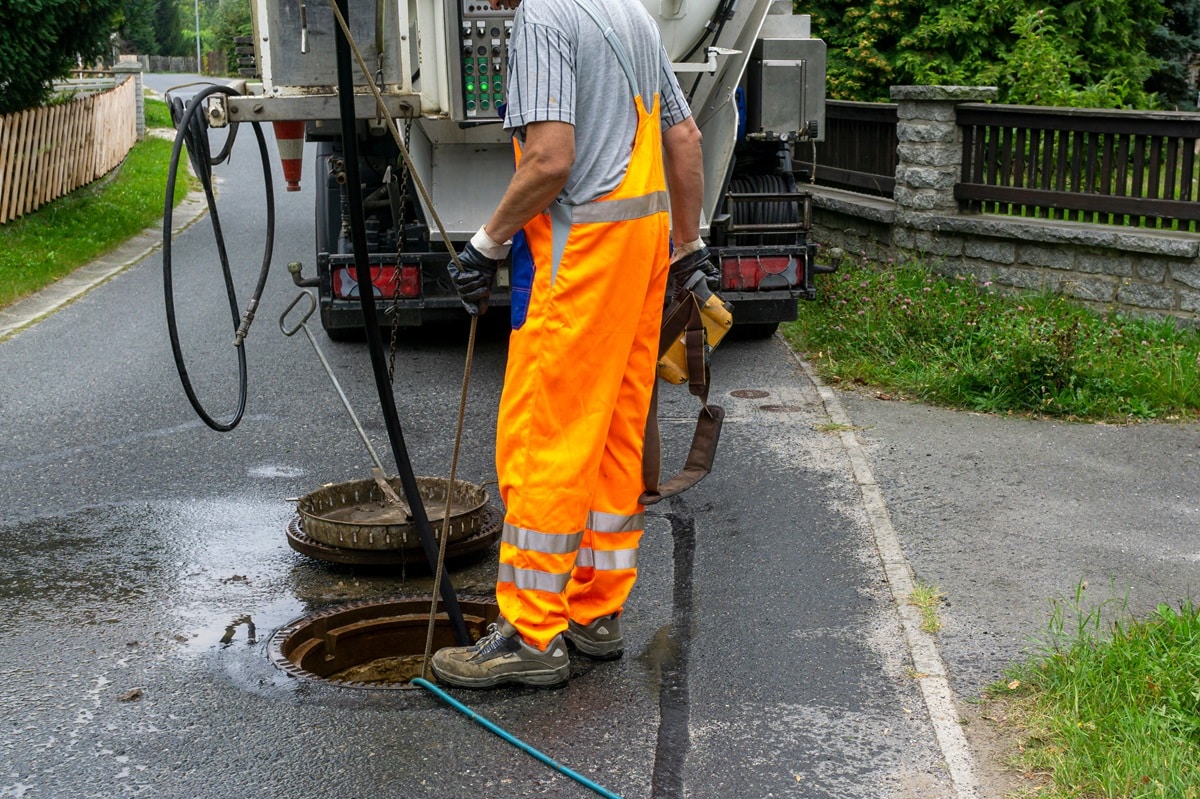
Mechanisms of Blockage Formation
Understanding how plant debris accumulates and causes blockages in drainage systems is essential for effective prevention and maintenance. This section explores the processes involved in blockage formation due to plant debris.
Accumulation in Gutters and Downspouts
Plant debris, such as leaves, twigs, and branches, often accumulates in gutters and downspouts. This accumulation occurs primarily during autumn when leaves fall in large quantities. Over time, the debris can build up, obstructing the flow of water and leading to blockages.
Clogging of Outdoor Drains and Grates
When plant debris is not removed from gutters and downspouts, it can travel to outdoor drains and grates. Here, the debris can settle and create obstructions. This is particularly common during storms or high winds, which can carry significant amounts of plant material into drainage systems.
Formation of Dense Clogs
Plant debris can mix with other materials, such as dirt, litter, and grease, to form dense clogs. These clogs are more challenging to remove and can significantly impede water flow. The combination of organic and inorganic materials creates a compact mass that blocks the drainage system.
Physical and Chemical Processes
Physical Processes
- Accumulation: Plant debris gathers in specific areas, such as gutters, downspouts, and drains.
- Compaction: The weight of accumulated debris compacts it, making it more difficult to dislodge.
Chemical Processes
- Decomposition: Organic plant material decomposes over time, producing substances that can further obstruct water flow.
- Chemical Reactions: Decomposing plant material can react with other substances in the drain, such as soap scum or grease, creating more resilient blockages.
Understanding these mechanisms helps in identifying effective preventive measures and maintenance routines to keep drainage systems clear of plant debris.
Signs of Blocked Drains Due to Plant Debris
Blocked drains caused by plant debris can present several noticeable signs. Recognising these indicators early can help in addressing the issue promptly and preventing further complications.
Common Signs of Plant Debris Blockages
- Slow Drainage in Outdoor Areas
- One of the primary signs of a blockage is slow drainage. If water takes longer than usual to drain from outdoor areas, it may indicate that plant debris is obstructing the flow.
- Water Pooling Around Drains
- Water pooling around drains is another clear sign of a blockage. This occurs when plant debris prevents water from flowing through the drainage system, causing it to accumulate around the drain openings.
- Unpleasant Odours from Decomposing Plant Matter
- Decomposing plant debris can emit foul odours. If there is a persistent unpleasant smell near drains, it may be due to plant material decomposing within the drainage system.
Detailed Indicators
Slow Drainage
- Observation: Water drains sluggishly or not at all.
- Implication: Indicates that plant debris is partially or fully blocking the drain, impeding water flow.
Water Pooling
- Observation: Water accumulates around the drain openings.
- Implication: Suggests that the drain is blocked, preventing water from passing through and causing it to pool.
Unpleasant Odours
- Observation: Foul smells emanate from the drain area.
- Implication: Decomposing plant matter within the drain is likely causing the odours, indicating a blockage.
Recognising these signs can help in taking timely action to clear the blockages and maintain the efficiency of the drainage system.
Preventive Measures for Plant Debris Blockages
Preventing plant debris from causing blockages in drainage systems requires consistent maintenance and strategic measures. Implementing these preventive steps can help maintain clear and efficient drains.
Regular Cleaning of Gutters and Downspouts
Regular cleaning of gutters and downspouts is essential to prevent the accumulation of plant debris. This practice ensures that leaves, twigs, and other materials do not build up and obstruct water flow.
- Frequency: Clean gutters and downspouts at least twice a year, particularly in autumn and spring.
- Tools: Use gutter scoops, brushes, and water hoses to remove debris effectively.
Benefits of Installing Drain Guards and Screens
Installing drain guards and screens can significantly reduce the amount of plant debris entering the drainage system. These devices act as barriers, preventing larger debris from clogging the drains.
- Types: Mesh screens, gutter guards, and leaf strainers.
- Installation: Place guards over gutters and drain openings to catch debris while allowing water to flow through.
Landscaping Practices to Minimise Debris Near Drains
Strategic landscaping can help minimise the amount of plant debris that reaches drains. By managing the placement and maintenance of plants, you can reduce the risk of blockages.
- Plant Selection: Choose plants that shed less debris, such as evergreens.
- Placement: Avoid planting trees and shrubs directly above or near drainage systems.
- Maintenance: Regularly prune trees and shrubs to reduce the amount of falling debris.
Effective Seasonal Maintenance Routines
Seasonal maintenance routines are crucial for keeping drains clear of plant debris. Different seasons present unique challenges that require specific actions.
- Autumn: Increase the frequency of gutter and drain cleaning to manage falling leaves.
- Spring: Conduct a thorough cleaning to remove winter debris and prepare for new growth.
- Storm Preparation: Before storm seasons, ensure that all drains and gutters are clear to handle increased water flow.
Implementing these preventive measures can help maintain the efficiency of drainage systems and reduce the risk of blockages caused by plant debris.
Tools and Equipment for Clearing Plant Debris
Clearing plant debris from drains requires the right tools and equipment. Utilising these tools effectively can help maintain clear and functional drainage systems.
Effective Tools for Clearing Plant Debris
- Leaf Blowers and Vacuums
- Function: Leaf blowers and vacuums are used to remove leaves and small debris from gutters and outdoor areas.
- Benefits: These tools are efficient for quickly clearing large quantities of leaves and can be used regularly to prevent accumulation.
- Gutter Cleaning Tools
- Types: Gutter scoops, brushes, and water hoses.
- Function: These tools are designed to remove debris from gutters and downspouts.
- Benefits: They help maintain clear gutters, preventing debris from travelling to drains and causing blockages.
- Drain Snakes and Augers
- Function: Drain snakes and augers are used to clear blockages within the drainage system.
- Types: Manual and powered versions.
- Benefits: These tools can reach deep into the drainage system to dislodge and remove compacted plant debris and other materials.
How Leaf Blowers and Vacuums Help in Maintenance
- Efficiency: Leaf blowers and vacuums can quickly clear large areas of leaves and small debris.
- Regular Use: Using these tools regularly can prevent the buildup of plant debris in gutters and around drain openings.
Benefits of Using Gutter Cleaning Tools
- Accessibility: Gutter scoops and brushes can reach into gutters and downspouts to remove debris.
- Effectiveness: Water hoses can flush out remaining debris, ensuring gutters are clear and functional.
How Drain Snakes and Augers Work for Clearing Blockages
- Manual Snakes: These are inserted into the drain and manually turned to break up and remove blockages.
- Powered Augers: These use motorised action to clear more stubborn blockages, reaching deeper into the drainage system.
Using the appropriate tools and equipment for clearing plant debris can help maintain efficient drainage systems and prevent blockages. Regular maintenance with these tools ensures that plant debris does not accumulate and cause issues.
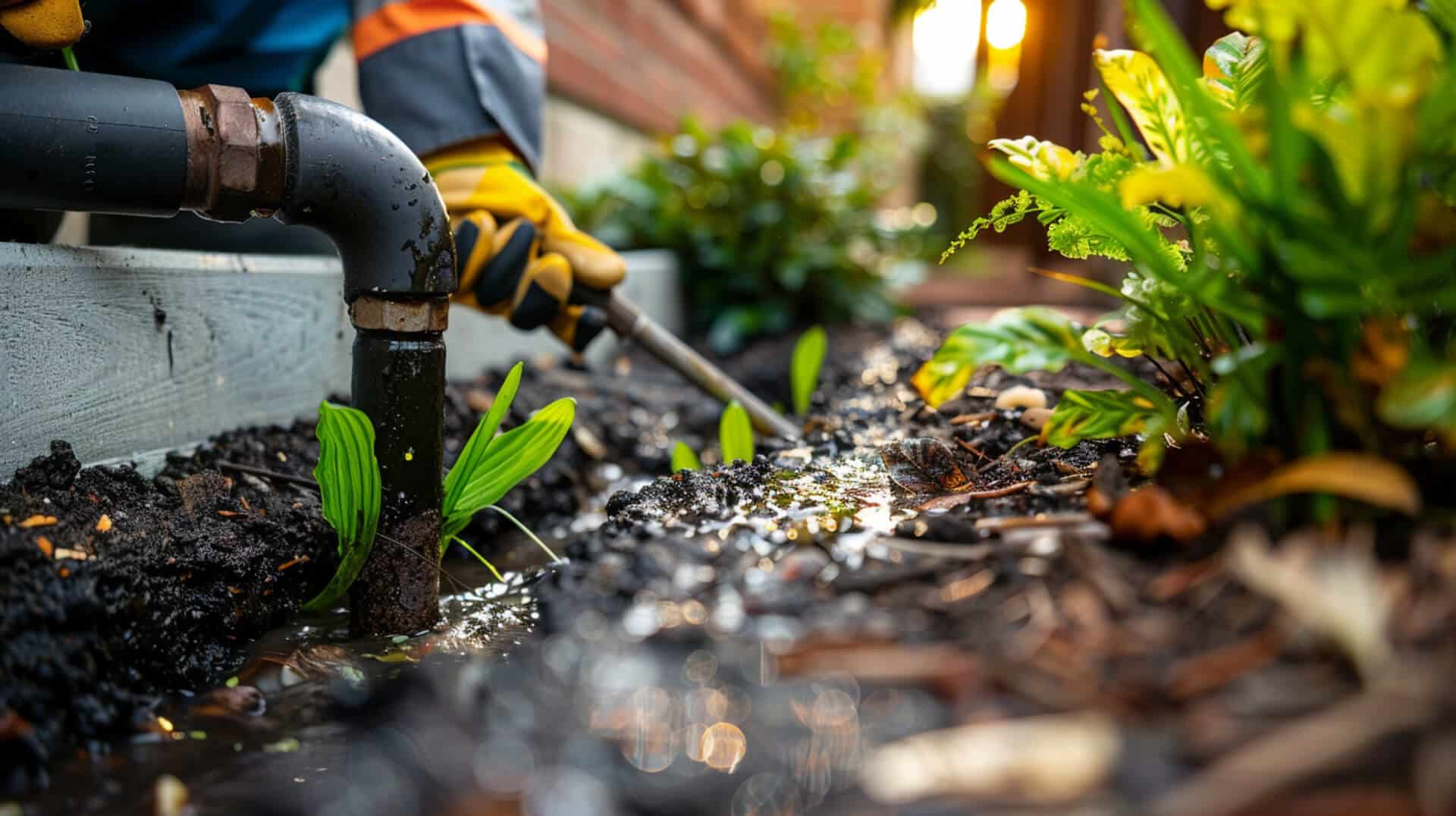
Seasonal Considerations for Drain Maintenance
Seasonal changes significantly impact the maintenance requirements of drainage systems. Understanding these variations can help in planning effective maintenance routines to prevent blockages caused by plant debris.
Autumn: A Critical Time for Drain Maintenance
Autumn is a crucial period for drain maintenance due to the large quantities of falling leaves. These leaves can accumulate in gutters, downspouts, and outdoor drains, leading to blockages.
- Increased Debris: The shedding of leaves from trees increases the amount of plant debris.
- Regular Cleaning: Frequent cleaning of gutters and drains is necessary to prevent blockages.
Spring Cleaning to Remove Winter Debris
Spring cleaning is essential to clear out debris that has accumulated over the winter months. This preparation ensures that drainage systems are ready for the increased water flow from spring rains.
- Winter Debris: Snow, ice, and wind can deposit debris in gutters and drains.
- Thorough Cleaning: Removing this debris helps maintain clear and functional drainage systems.
Preparations for Storm Seasons
Storm seasons require specific preparations to handle the increased water flow and potential for additional debris.
- Pre-Storm Inspection: Inspect and clean gutters and drains before the storm season to ensure they are clear.
- Debris Removal: Remove any loose plant material that could be washed into the drainage system during storms.
Impact of Different Seasons on Maintenance Frequency
Different seasons affect the frequency and type of maintenance required for drainage systems.
- Autumn: Increased frequency of cleaning due to falling leaves.
- Winter: Regular checks to remove ice and snow buildup.
- Spring: Thorough cleaning to remove winter debris.
- Summer: Regular maintenance to manage plant growth and prevent blockages.
Understanding these seasonal considerations helps in planning effective maintenance routines to keep drainage systems clear and functional throughout the year.
Long-term Effects of Plant Debris Blockages
Blocked drains caused by plant debris can have significant long-term effects on drainage systems and properties. Understanding these potential damages is crucial for effective maintenance and prevention.
Potential Damages to Drainage Systems
Plant debris blockages can cause various types of damage to drainage systems. Over time, the accumulation of debris can lead to structural issues and reduced efficiency.
- Pipe Damage: Persistent blockages can cause pressure build-up, leading to cracks or breaks in pipes.
- Corrosion: Decomposing plant material can produce acidic substances that corrode pipes and other drainage components.
Increased Risk of Flooding
Blocked drains significantly increase the risk of flooding, particularly during heavy rainfall or storms. When water cannot flow freely through the drainage system, it can overflow and cause flooding in outdoor and indoor areas.
- Surface Flooding: Water pooling around blocked drains can lead to surface flooding, damaging landscaping and outdoor structures.
- Indoor Flooding: Severe blockages can cause water to back up into buildings, leading to indoor flooding and water damage.
Health Risks Associated with Mould and Mildew Growth
Blocked drains can create conditions conducive to mould and mildew growth. Standing water and damp environments provide ideal conditions for these fungi to thrive.
- Respiratory Issues: Mould and mildew can release spores into the air, causing respiratory problems and allergic reactions.
- Structural Damage: Mould growth can damage building materials, leading to costly repairs and potential health hazards.
Impact on Property Value
Long-term neglect of plant debris blockages can negatively impact property value. Persistent drainage issues and associated damages can deter potential buyers and reduce the overall appeal of the property.
- Aesthetic Damage: Visible signs of water damage, such as stains and mould, can decrease the property’s visual appeal.
- Repair Costs: The need for extensive repairs to address drainage issues and related damages can lower the property’s market value.
Understanding these long-term effects highlights the importance of regular maintenance and prompt action to address plant debris blockages in drainage systems.
Professional Services for Drain Maintenance
Professional services play a crucial role in maintaining clear and efficient drainage systems, especially when dealing with blockages caused by plant debris. Understanding when to seek professional help and the available services can ensure long-term drain health.
When to Consider Professional Inspections and Maintenance
Regular professional inspections and maintenance are essential for early detection and prevention of severe blockages. Consider professional services in the following scenarios:
- Recurring Blockages: Persistent issues despite regular cleaning.
- Multiple Blocked Drains: Indicates a larger systemic problem.
- Foul Odours or Gurgling Sounds: Suggests deeper blockages or sewer line issues.
- Water Backup or Flooding: Immediate professional intervention required.
Emergency Drain Clearing Services
Emergency services are available for urgent situations where immediate action is necessary to prevent damage and restore functionality.
- 24/7 Availability: Many professional services offer round-the-clock emergency support.
- Quick Response: Rapid intervention to address severe blockages and prevent further complications.
Advanced Equipment: CCTV Drain Inspections
CCTV drain inspections utilise advanced technology to identify the exact location and nature of blockages within the drainage system.
- High-Resolution Cameras: Provide a clear view of the interior of pipes.
- Accurate Diagnosis: Helps in pinpointing the cause and location of blockages.
- Preventive Maintenance: Identifies potential issues before they become severe.
Benefits of Professional Root Cutting Services
Tree roots can invade underground pipes, causing severe blockages and damage. Professional root cutting services offer effective solutions to this problem.
- Specialised Equipment: Tools designed to cut and remove invasive roots.
- Preventive Measures: Regular root cutting can prevent future blockages.
- Long-Term Solutions: Ensures the integrity and functionality of the drainage system.
Utilising professional services for drain maintenance ensures that blockages caused by plant debris are effectively managed, preventing long-term damage and maintaining efficient drainage systems.
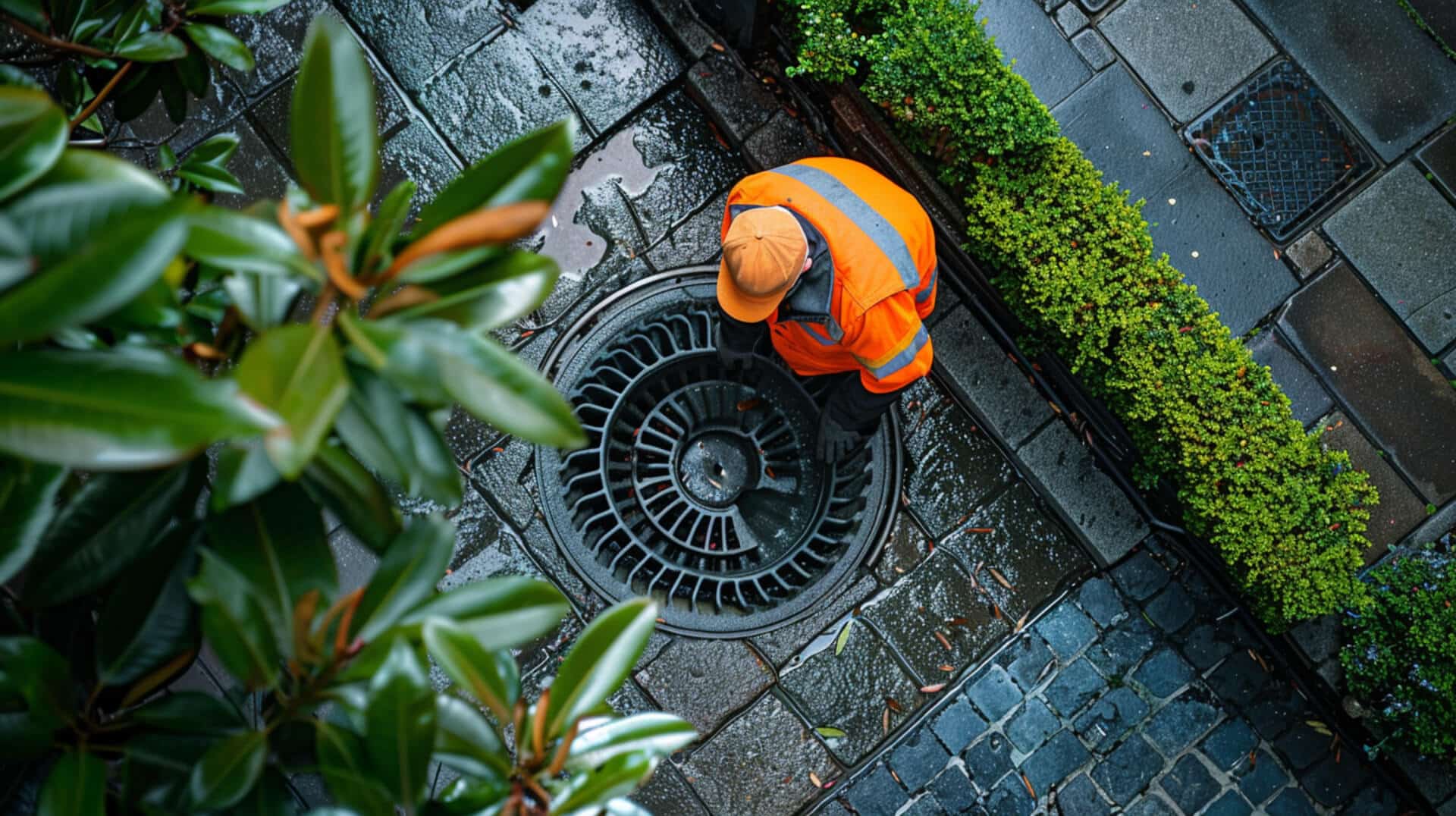
Cost Implications of Plant Debris Blockages
Understanding the cost implications of plant debris blockages in drainage systems is essential for effective financial planning and maintenance. This section explores the various costs associated with regular maintenance, emergency repairs, and professional services.
Costs Associated with Regular Maintenance vs. Emergency Repairs
Regular maintenance of drainage systems can prevent costly emergency repairs. The expenses involved in routine maintenance are generally lower compared to the costs incurred during emergency situations.
- Regular Maintenance:
- Frequency: Bi-annual cleaning and inspections.
- Costs: Typically lower, covering labour and basic equipment.
- Benefits: Prevents severe blockages and reduces long-term repair costs.
- Emergency Repairs:
- Frequency: As needed, often during severe blockages or flooding.
- Costs: Higher due to urgent labour, advanced equipment, and potential property damage.
- Drawbacks: Can be significantly more expensive and disruptive.
Potential Savings from Preventive Measures
Implementing preventive measures can lead to substantial savings by reducing the likelihood of severe blockages and the need for emergency repairs.
- Preventive Measures:
- Drain Guards and Screens: Initial installation costs but long-term savings.
- Regular Cleaning: Low-cost routine maintenance.
- Seasonal Inspections: Identifies issues early, preventing costly repairs.
Insurance Considerations for Property Damage
Insurance policies may cover certain types of property damage caused by blocked drains. Understanding the coverage and limitations of your insurance policy is crucial.
- Coverage:
- Property Damage: Some policies cover water damage from blocked drains.
- Maintenance Neglect: Policies may not cover damage due to lack of maintenance.
- Recommendations:
- Review Policy: Ensure your policy covers relevant damages.
- Maintain Records: Keep records of maintenance to support insurance claims.
Cost-Effectiveness of Professional Services
Professional services can be cost-effective in the long run by providing thorough maintenance and preventing severe blockages.
- Professional Inspections:
- Frequency: Annual or bi-annual.
- Costs: Moderate, covering advanced equipment and expertise.
- Benefits: Early detection of issues, preventing costly repairs.
- Emergency Services:
- Availability: 24/7 for urgent situations.
- Costs: Higher due to urgency and complexity.
- Benefits: Immediate resolution of severe blockages, preventing further damage.
Understanding these cost implications helps in making informed decisions about maintaining drainage systems and managing plant debris blockages effectively.
Innovative Solutions and Technologies
Innovative solutions and technologies are continually being developed to address the challenges of plant debris blockages in drainage systems. These advancements offer more efficient and environmentally friendly methods for maintaining clear drains.
Latest Technologies in Drainage Systems
Modern drainage systems incorporate advanced technologies to enhance efficiency and reduce blockages. These technologies include:
- Smart Drainage Systems: Utilise sensors and IoT (Internet of Things) devices to monitor water flow and detect blockages in real-time.
- Self-Cleaning Drains: Designed with mechanisms that automatically remove debris, reducing the need for manual cleaning.
How Biodegradable Drain Cleaners Work
Biodegradable drain cleaners offer an eco-friendly alternative to traditional chemical cleaners. They work by:
- Enzymatic Action: Contain enzymes that break down organic matter, such as plant debris, into harmless substances.
- Non-Toxic Ingredients: Made from natural, non-toxic ingredients that are safe for the environment and plumbing systems.
Modern Methods for Removing Tree Roots
Tree roots can cause severe blockages in drainage systems. Modern methods for removing tree roots include:
- Hydro Jetting: Uses high-pressure water jets to cut through roots and clear blockages.
- Root Barriers: Installed around pipes to prevent roots from reaching and invading the drainage system.
- Chemical Root Killers: Applied to kill roots without harming the surrounding vegetation.
Impact of Climate Change on Drainage Systems
Climate change has a significant impact on drainage systems, affecting their efficiency and increasing the risk of blockages. Key impacts include:
- Increased Rainfall: More frequent and intense rainfall can overwhelm drainage systems, leading to blockages and flooding.
- Temperature Fluctuations: Extreme temperature changes can cause pipes to expand and contract, increasing the risk of cracks and blockages.
- Vegetation Growth: Warmer temperatures can lead to increased plant growth, resulting in more debris entering drainage systems.
Understanding these innovative solutions and technologies helps in effectively managing and preventing plant debris blockages in drainage systems.
Key Takeaways from This Guide
Understanding the common causes of blocked drains due to plant debris and implementing preventive measures is essential for maintaining efficient drainage systems. This guide has covered various aspects, including the types of plant debris that cause blockages, mechanisms of blockage formation, signs of blocked drains, preventive measures, tools and equipment for clearing debris, seasonal considerations, long-term effects, professional services, cost implications, and innovative solutions.
Maintaining Clear Drains
Property owners, business owners, and facility managers can maintain clear drains by:
- Regular Cleaning: Consistently clean gutters, downspouts, and outdoor drains to prevent debris accumulation.
- Installing Drain Guards: Use drain guards and screens to block plant debris from entering the drainage system.
- Seasonal Maintenance: Adjust maintenance routines according to seasonal changes to manage increased debris during autumn and spring.
Importance of Proactive Maintenance
Proactive maintenance is crucial for long-term drain health because it:
- Prevents Severe Blockages: Regular maintenance reduces the risk of severe blockages that can lead to costly repairs and property damage.
- Ensures Efficient Water Flow: Keeping drains clear ensures efficient water flow, preventing flooding and water damage.
- Reduces Health Risks: Preventing blockages minimises the risk of mould and mildew growth, which can pose health hazards.
Next Steps for Addressing Plant Debris Blockages
To address plant debris blockages effectively, consider the following steps:
- Schedule Regular Inspections: Arrange for professional inspections to identify and address potential issues early.
- Implement Preventive Measures: Use drain guards, regular cleaning, and strategic landscaping to minimise debris entry.
- Utilise Professional Services: Engage professional services for thorough maintenance, emergency clearing, and advanced solutions like CCTV drain inspections and root cutting.
By following these guidelines, property owners, business owners, and facility managers can ensure the long-term health and efficiency of their drainage systems.
